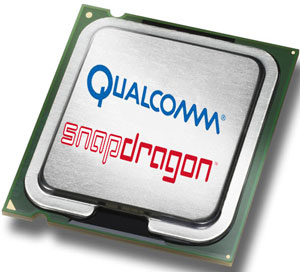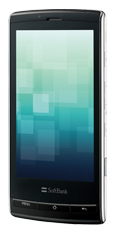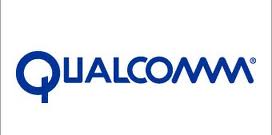The Snapdragon processors are the latest generation of Qualcomm mobile chips used in smartphones (e.g. Google Nexus One) and tablets (e.g. Dell Streak). There are currently 3 generations of Snapdragon chipsets: First-Generation: QSD8x50 chipsets consisting of QSD8250™ and QSD8650™ based on ARM11 core running at 1GHz, a 595 MHz DSP, hardware-accelerated 3D graphics with Adreno 200 GPU, integrated Bluetooth 2.0 and GPS capabilities, a 12-megapixel camera and 720p video encode / decode. Second-Generation: MSM8x55 chipsets consisting of MSM8255™ and MSM8655™ based on ARM11 core running at 1 GHz as well as MSM7x30 chipsets consisting of MSM7230™ and MSM7630™ running at 800 MHz. All second generation chipsets use Adreno 205 GPU. Third-Generation: MSM8x60 chipsets platform consisting of MSM8260™ and MSM8660™, dual-core CPU running up to 1.2 GHz with Adreno 220 GPU. The QSD8672 running at 1.5GHz will also be part of the third generation and samples will be shipped by the […]
USB Hotplug Parameters and A Simple Linux USB Hotplug Script
USB Hotplug allows your system to detect a USB device has been inserted or removed and perform certain actions upon the USB device detection. The article below is largely inspired by http://linux-hotplug.sourceforge.net/?selected=hotplug which does not seem to work anymore. USB hotplugging involves: MODULE_DEVICE_TABLE support in the USB Device Driver API, so that a driver’s probe() routine is called only when it’s very likely to want to bind to a particular interface. USB always uses this. Support for invoking the hotplug helper (/sbin/hotplug by default) when devices are added or removed. This functionality is enabled only by CONFIG_HOTPLUG. That hotplug helper usually contacts a policy agent which handles the USB-level configuration or activation tasks appropriate to this device and the current system configuration. Boot-time configuration (“cold-plugging”) can be managed by the /etc/rc.d/init.d/hotplug startup script, if the “usbmodules” command line utility is available. (There is also a “diet hotplug” tool for use […]
3D capable Android 2.2 Smartphones
Lately all the rage was for 3D high definition televisions, but now 3D is also coming to mobile handsets. Softbank will release 2 smartphones – “Galapagos 003SH” and “Galapagos 005SH” – in Japan between the end of 2010 and spring 2011. The smartphones will run Android 2.2 on a platform based on Qualcomm MSM8255 @ 1Ghz, feature a 3.8″ display and the capability to record HD videos (720p maximum). The main differences between the 2 handsets are that Galapagos 005SH will have a slide-out keyboard and a built-in 8 Megapixel camera whereas 003SH won’t have the keyboard but the camera will be 9.6 Megapixel. Both handsets will be manufactured by Sharp which also owns the 3D technology. The 3D images and videos will be viewable with the naked eyes, i.e. you won’t have to wear glasses. This will be used for picture, videos and 3D games. The smartphones will be […]
Default root password for sigma designs smp86xx boards
I have seen some people google for the default root password for sigma designs boards and they ended up in this blog without any answer. So I’ll provide some kind of answer. In the serial port console, once you get to the username/password prompt, the root password is… there is none, just press “Enter”. This is the default behavior in Sigma Designs SDK, it’s quite possible the root password has been changed for the device you are trying to access. In case telnet or ssh is enabled, you may try one of the default users in /etc/password, that may not have been disabled by the development team e.g. ftp, man, nobody,default, etc… and try to login without password, by just pressing “Enter” at the password prompt. Once you are logged-in as a normal user, type “su” to become super user, press “Enter” if you are being asked for a password.
Digital Signage Standard: Open Pluggable Specification (OPS)
A while ago, we discussed about Popai Digital Signage Standards, mainly focused on software and client/server interoperability. Intel has just released a new standard for Digital Signage: Open Pluggable Specification (OPS). Here’s the description of the specification on Intel website. The Open Pluggable Specification (OPS) helps standardize the design and development of digital signage devices and pluggable media players. Intel created the OPS to address digital signage market fragmentation and simplify device installation, usage, maintenance and upgrades. The OPS enables digital signage manufacturers to deploy interchangeable systems faster and in higher volumes, while lowering costs for development and implementation. Installing digital signage equipment based on Intel® architecture helps you implement scalable digital signage applications that can network easily with other equipment. This simplifies interoperability and application upgrades designed to meet the digital signage requirements of individual customers, while helping to future-proof technology investments. You’ll need to fill a form to […]
XIBO: An Open Source Digital Signage Server/Client
Today’s post will deal with Xibo (pronounced eX-E-bO), an open source, multi-display, multi-zone, fully scheduled digital signage solution. I’ll firstly give an overview and explain how to install the client and server in Windows XP. In another post, I’ll demo the system. The server can run on Windows or Linux and requires a web server (Apache / IIS), php5 and a MySQL database. The client can only runs on Windows 2000/Xp/Vista/7 and requires .NET Framework v3.5, Internet Explorer 7 or 8, Flash Player Version 9 or later, Windows Media Player 11 or later, Microsoft Powerpoint 2003 or later. As you can see from the client description, it won’t be able to run on Linux embedded systems, but it is still interesting to study this solution to see the content management flow, what this solution has to offer and how we get development idea from this solution. An embedded client based […]
Resources for Qualcomm MSM722x: MSM7225, MSM7227
Qualcomm MSM722x processors – part of MSM (Mobile Station Modem) series – are mainly used in mobile phones and to a lesser extend in tablets such as WellCoM A800. You won’t find any proper documents or information in Qualcomm website (see Qualcomm MSM page) except the following description: Qualcomm’s Mobile Station Modem™ (MSM™) chipset solutions enable cost-effective mobile handsets with advanced capabilities that leverage 3G technology yet minimize development time. Offered on four discrete platforms for tailored functionality, each chipset is integrated with a select set of features from Qualcomm’s multimedia suite of applications to enrich the user experience while maintaining cost-target objectives. So if you plan on developing on that platform, you’ll need to visit Qualcomm developer website to get most of the information you’ll need. There are two chipsets with similar characteristics. MSM7225 The MSM7225 chipset includes a 528 MHz ARM11 processor with a floating point unit (FPU). […]
WellcoM WePad A800 Android 2.2 Tablet Video Review
More and more decent (e.g. with capacitive multi-touch screen, decent processor…) and cost-effective android tablets are hitting the market such as Archos Gen8 Series. It might be difficult to obtain Archos 70 in some countries in Asia. But not is all lost as product such as the WellcoM WePad A800 are available in Thailand (and probably other countries). This tablet based on Qualcomm MSM7227 @ 600 Mhz runs on Android 2.2. The device comes with 512 MB DDR RAM, 512 MB Rom, a 7″ multi-touch capacitive touch screen (800 x 480) , Wifi, Bluetooth, 2G/3G network support. I discovered this product in a shop in Chiang Mai yesterday. I tried it a bit, it was very smooth and responsive. It sells for 15900 Baht (530 USD / 383 Euros) with a free bluetooth headset. The following videos (In Thai only) reviews the device. The reviewers runs a lot of benchmark […]












